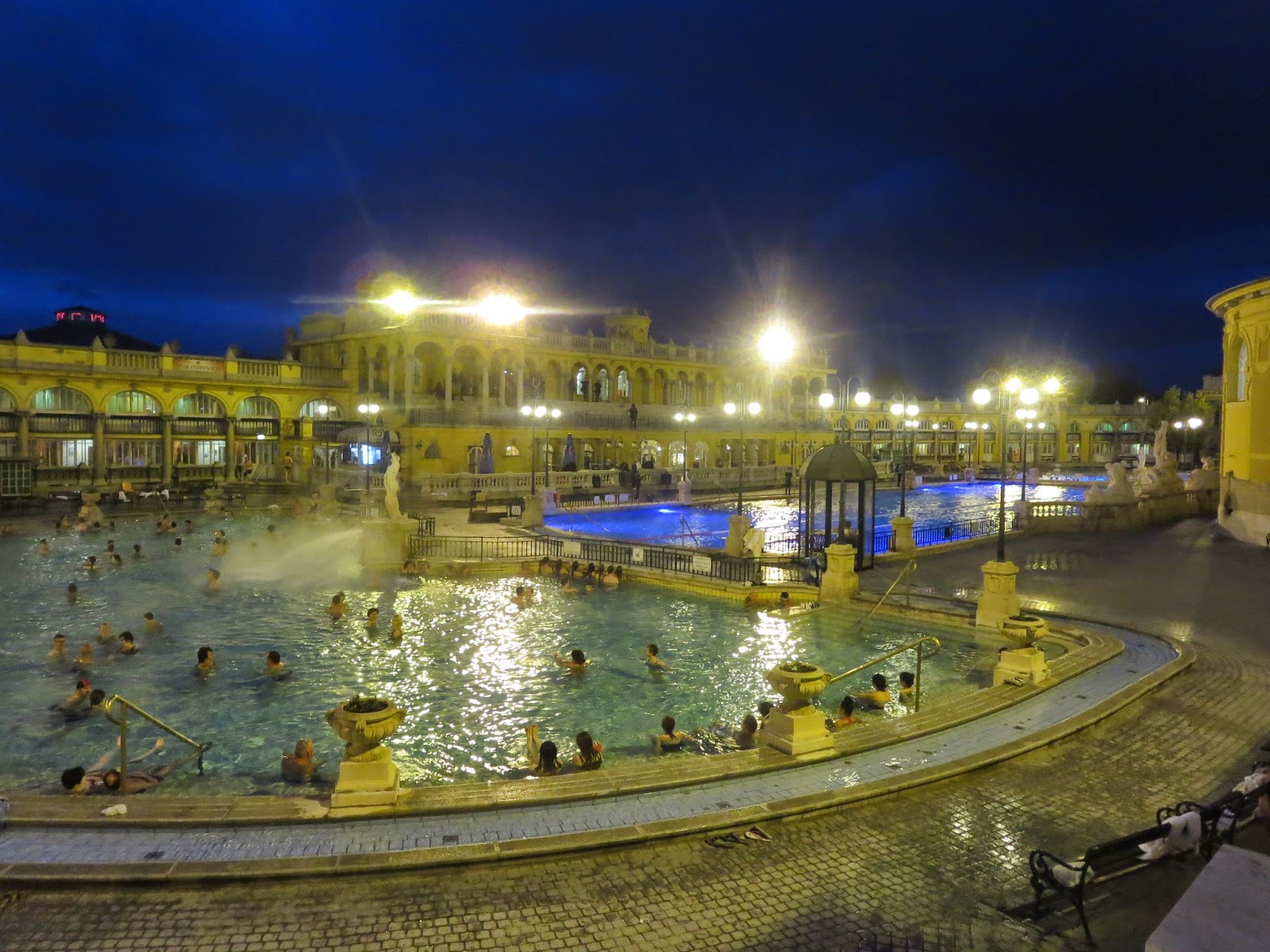Scott and I were ready for another day full of sightseeing in Budapest, however, we quickly learned that it was a Hungarian National Holiday and most sights were closed. The Holiday (observed Oct. 23) is two-fold. It is to commemorate the Uprising against Soviet regime in 1956 and also is the day in 1989 that Hungary was declared independent. Pretty big deal. More on these events later.
In the meantime, Scott and I had to fend for ourselves in sightseeing land. We decided to do one of our walking tours, where we saw the Millennium Monument. It was built in 1896, to commemorate the millennium that had passed since Hungary was originally founded in 896 by the Magyars.
[Side Note] Magyar is pronounced "Mud-jyar". We found Hungarian extremely hard to pick up, and we are not alone. It is not a typical Indo-European language, and its only close relatives are Finnish and Estonian. Let's just say it seemed like a relief to return to German (where I understand maybe 10% instead of 0%).
The statues seen in this monument are of the most prominent leaders in Hungary's history.
We sort of stumbled around the city for a while and maybe we made a couple food stops. Hungary is known for its pastries, many found at bakeries called "Fornetti" that are everywhere. Delicious. In general, the food we had in Hungary was awesome!
We finished the day going to our favorite ruin pub, where this happened...
On our last day, we were set to head back to Vienna but needed to do one more stop. We went to a museum called "The House of Terror". We tried to go here the day before, but because of the holiday, the line to get in stretched around the block! This day, it wasn't quite as busy.
The museum was dedicated in 2002 to commemorate the two regimes of terror the city of Budapest (and Hungary) were forced to live under- the Nazis and the Soviets. It's one of those museums (like a Holocaust museum) that isn't very pleasant, but important to remember in a "don't let history repeat itself" way.
The House of Terror is one of the most well done museums I have ever been to. The museum, in a very moving way, honors the Hungarian citizens and the freedoms that they lost during this time. I won't try to explain everything in the museum, but here are some quick facts if you don't know about this history:
-Nazis officially took over Hungary from 1944-45. In only this one year, 10-15,000 people (mostly Jews) were murdered and 80,000 sent to Auschwitz and subsequently died there.
-Towards the end of World War 2, Budapest endured a 100-day siege by the Soviet Army. This resulted in the death of 38,000 civilians and the destruction of 80% of the city.
-The Soviets took control and started arresting citizens who were deemed ethnic Germans or "potentially dangerous" (basically whoever they wanted) and sent them to "gulags" in Soviet Union (usually Siberia). In total 600-700,000 Hungarian citizens were sent to work camps. These camps had very poor living conditions, and many did not return home. The atrocities that existed related to the gulags were not discovered until years later.
-Hungary is particularly proud of the 1956 Revolution that occurred in Budapest. The Hungarians had had enough and staged a revolution. Unfortunately, the revolution was crushed by the Soviets and many Hungarians that were involved were either executed or arrested. After this, 200,000 Hungarians fled to western countries to escape communism.
-On October 23, 1989, Hungary was officially declared independent and began taking the down the fence that had divided it from Austria and the Western world.
We could not take any pictures inside, but outside they had a statue to represent the "Iron Curtain". The words of the inscription are: "Shall we live as slaves or free men? It isolated the east from the west. It split Europe and the world in two. It took away our freedom. It held us in captivity and fear. It tormented and humiliated us. And finally we tore it down."
Needless to say, Scott and I learned a lot by going east of the Iron Curtain. Their history has played out so differently than the western countries we have been in. It's definitely a story worth hearing and I'm glad we were able to.

















































